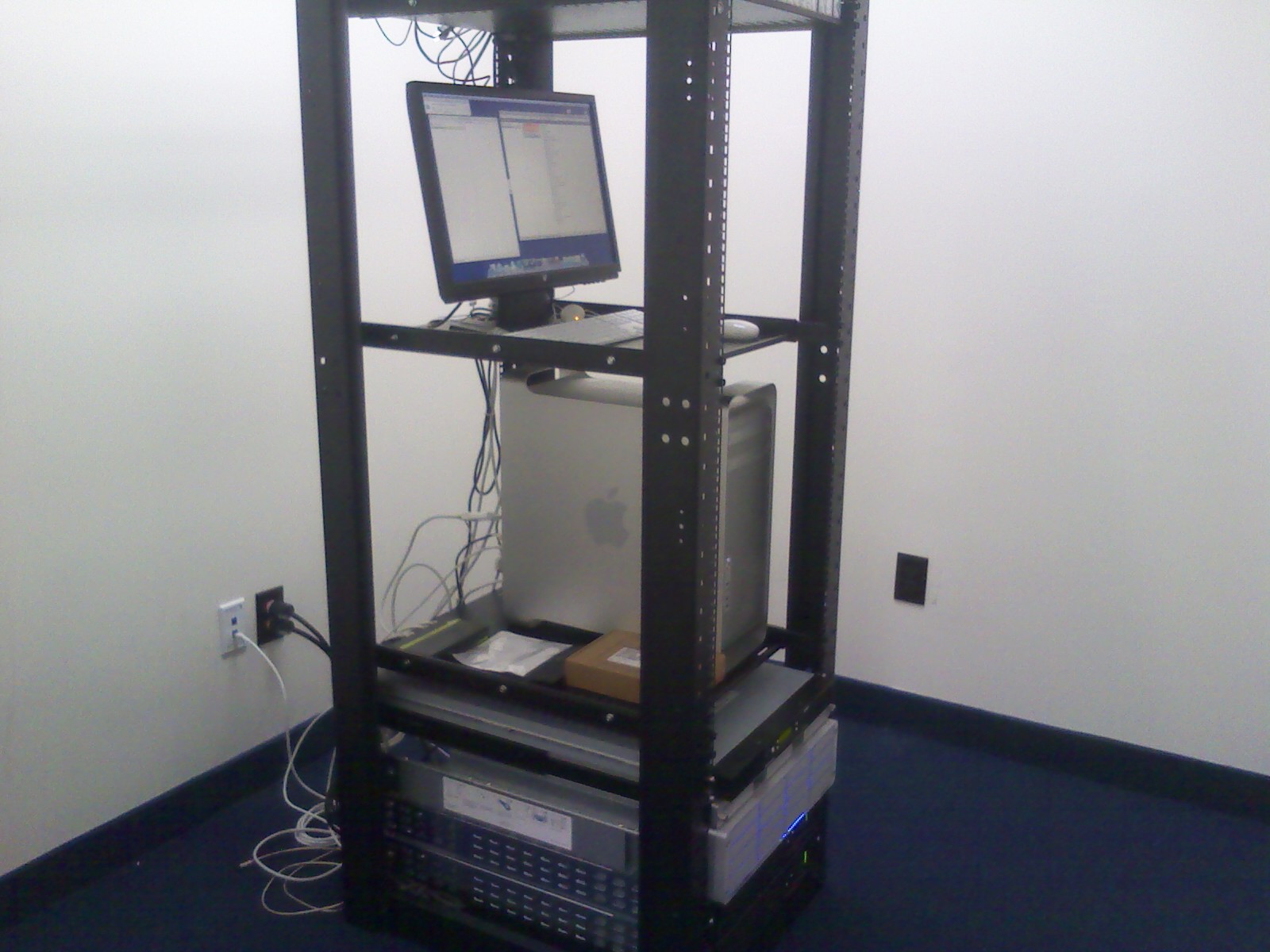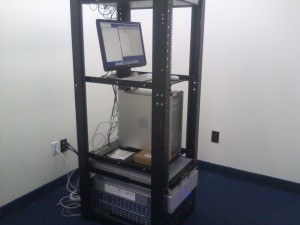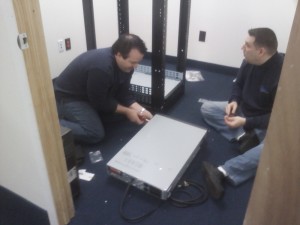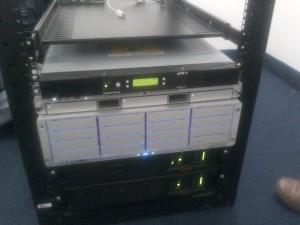
It was a long time coming, but we reached the point of inevitability. Our old trio of server boxes with a multitude of attached storage drives had reached their limits. It was time to consolidate and increase our file capacity – both for the present and for the future.
Overall, our servers had worked great – no complaints. We got a lot of life out of those Macs: an old gray G4, a mirror-door G4, and a recent vintage Mac Pro. The oldest box is about 10 years old and had been working quite well, even though it was no longer our primary server anymore. The Mac Pro is still going strong as it’s still relatively new.
But we were running out of storage. And Power PC based G4’s cannot be brought up to date now that Apple has transitioned completely to Intel-based Macs. It didn’t make sense to just tack on more drives as we had already been doing just that and it was becoming a logistical nightmare.
Instead, we came to the conclusion that we needed to revamp our thinking and craft a system that would have scalable ultra-high capacity and significant speed. But it was really beyond our area of expertise.
After getting some referrals, we contacted the folks at HCS Technology Group. They are Mac experts and help companies like ours become more efficient with how they do business by designing appropriate solutions – in our case, updating systems and processes.
After our initial meeting with Craig and Keith of HCS, we determined that their ideas would work well for us. It was just a matter of what could we afford as the sky was the limit.
And so, it was decided that we would build a brand new server infrastructure from the ground up – with an Apple XServe as the center. Coupled with the XServe would be a Tandberg LTO-5 tape auto-loader for backups and a 16 bay Active Storage drive enclosure. The Mac Pro Tower was repurposed as an Open Directory Server Replica as well as the box that runs the Tape backups.
The equipment list was spec’ed out with the help of Dave at Webistix. We made some changes to the initial list and got everything narrowed down to what is now our new server system. The order was placed and it was a matter waiting for it all to start arriving on site.
But, there was a problem….
Our XServe was ordered just before Apple officially stopped taking new orders for them. Apparently, Apple decided that there wasn’t enough money in the server hardware business, so they had announced that, until further notice, they would no longer be offering an enterprise class, integrated hardware/software solution. While Snow Leopard Server software can still be purchased and installed on currently shipping Apple hardware, there is no professional level solution as there had been with XServe. We were lucky to get our order in before deadline.
Or were we lucky after all?
Within days of the January deadline, Apple announced a parts shortage for the last minute XServes being ordered. Our new server wouldn’t be shipped to us until they had the parts to finish building it. This unexpected delay turned into a frustrating multi-week setback.
Finally, with glee, I read the notice that our XServe had been built and shipped. Once it arrived, it was a matter of getting all of the pieces of the puzzle assembled and configured. Thankfully, the folks at HCS were there to direct the whole process – it would have been a nightmare to go it alone.
In just one day, they had all of the equipment installed in our new server rack system, and powered everything up. It was an impressive sight to see everything come to life with whirring fans and multi-color lights flashing.
The next step did require my personal involvement. We needed to migrate ALL of our data from three separate Mac Servers, over to the XServe – about 5TB of data combined. Needless to say, this was not a trivial process. I was able to plug some of our external drives in directly – those files copied quickly. But, other files were on internal drives so I had to figure out another method of doing the migration. Firewire target mode was a mixed bag of success. For the stuff that I couldn’t transfer that way, I needed to go via Gigabit Ethernet.
However, with all that data to be moved, it obviously could not be done during regular hours with everyone cranking out their work on the network. It meant that this transfer had to occur either late at night or over the weekend. I got most of the files copied overnight. But the rest had to wait for the weekend.
The problem with working over the weekend is that I wouldn’t have been able to come into the office – and I didn’t feel comfortable setting it up to go by itself, unattended. But as part of our new infrastructure, HCS set us up with the ability to connect to our network remotely via a Virtual Private Network (VPN). Once I fired up the VPN from my home iMac, I successfully logged in.
Then, I launched the Screen Sharing application and entered my office iMac’s IP Address. Within a few seconds, I was able to see and control my office iMac from home! This was really exciting stuff – and it was working!!
Next, I did a Screenshare with the XServe and the “old†Mac Pro Server. I set them up to initiate the transfer of the remaining files. A few hours later, after overseeing the digital bits copy to the XServe, the job was done – and I did it entirely from home. Very. Cool.
After that, HCS came in to configure the new server for us and established the Mac Pro as the Tape Backup Mac. We set up custom backup scripts to allow us both flexibility and peace of mind with our tape system.
All in all, the whole setup and migration went very smoothly. It all came together so well, and in much less time than we anticipated.
Now, just a few months later, we are finding the new server system to be much more robust and reliable than the old hodgepodge setup we had. HCS did a great job and we look forward to having them as our ongoing consultants into the future.
Read our review of HCS on the Apple Consultants Network:
Here
Webistix
www.webistix.com



My little caravan craft workshops for kids
Intrigue goes State-of-the-Art with new XServe